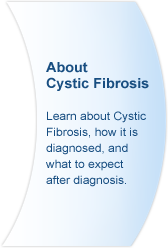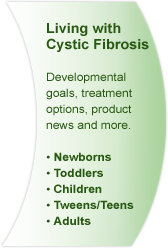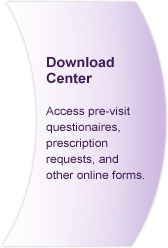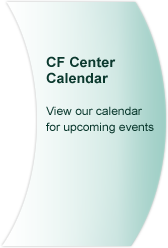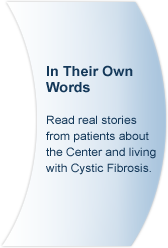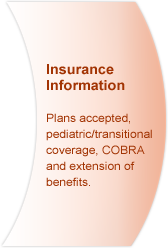|
|||||||
 |
 
Treatment OptionsAutogenic Drainage (AD)Autogenic Drainage (AD) uses expiratory airflow to mobilize secretions. Unlike postural draining, the patient can perform AD alone in a sitting position. AD requires training and concentration, and is generally suitable only for persons over age 12. Training generally takes a few hours.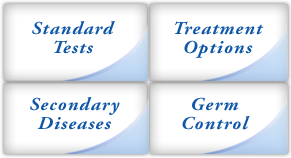
Here is an overview of how it works.Posture: Choose a breath-stimulating position like sitting or lying down with the neck slightly extended. Clear the upper airways by huffing or blowing one's nose.Breathing in: Slowly breathe in through the nose, using the diaphragm if possible and keeping the upper airways open. Breathe in normal-sized breaths, then breathe out for as long as you can. Pause: Hold your breath for approximately three seconds while keeping all the upper airways open to improve the even filling of all lung parts. The pause allows time for the air to get behind the secretions. Breathing out: Breathe out through the mouth if possible in a sighing breath, while keeping the upper airways open. Learn to monitor the sounds and feels. High-frequency vibration indicates the mucus is in the small airways, and lower frequencies indicate that mucus is in the large airways. Repeat: Repeat the cycle by breathing in. Inhale slowly without pushing the mucus back into the lungs. Continue low-level breathing until the mucus starts to collect and move upward. You'll be able to hear the crackling of mucus throughout the expiration and feel the mucus move up. You might also feel a strong urge to cough. Increase your breathing level as you go. As the collected mucus reaches the large airways, use a stronger expiration or high-lung-volume huff to evacuate it. Don't cough until the mucus is in the larger airways. This is the end of one cycle. Relax for a minute or two with breathing control, then repeat, continuing the session for 20 to 45 minutes. Three Volume Levels of Autogenic DrainageLevel One: Unsticking of peripheral secretions is achieved by low-lung-volume breathing. Exhale completely, inhale a small breath, hold it for one to three seconds, then exhale completely. Repeat this step for one to three minutes or until crackles are heard at the beginning of expiration.Level Two: Collecting the mucus in larger or mid-sized airways is achieved by taking in a slow, medium-sized breath for one to three seconds, then exhaling to one-third or one-half of expiratory reserve volume. Repeat this step for one to three minutes. When crackles are heard at the beginning of expiration, continue for two to three more breaths and then proceed to Level Three. Level Three: Evacuating the mucus in the central airways is achieved by breathing at normal to high volumes. Take in a slow, deep breath, hold the breath for one to three minutes and listen for expiratory crackles. Each level takes two to three minutes, with the full cycle taking six to nine minutes. When secretions are felt in the larger, central airways (usually in Level Three), do two to three effective huff-type coughs using mid-to high lung volumes. Try not to cough in Level One or Level Two. |
||||||
